The tech industry has never seemed certain about whether tablets are entirely their own device category, or best served simply as a replacement for laptops, and no tablet feels more emblematic of that uncertainty than the Tab S8 Ultra.
With an enormous 14in display, this is a beautiful device for media consumption and web browsing – but with prices starting from $1,099/£999 it’s hard to imagine many people dropping that kind of money to watch Netflix on the train (after all, how could you afford it after paying Netflix’s newly increased fees?).
The display’s size and aspect ratio look a lot like a laptop’s, especially with the keyboard cover attached, and with Samsung’s DeX interface this is a surprisingly capable computer alternative.
On the other hand, that keyboard case is both optional and extortionately priced. Samsung does include an S Pen stylus for free with the tablet, but this is too large a tablet to simply hold in one hand and use a stylus with the other.
How well the Tab S8 Ultra works will depend a lot on why it appeals to you – and how much money you have to burn.
Design and build
- Enormous display
- Slim but solid construction
- Noticeable notch
The first thing that anyone notices about the Tab S8 Ultra is that this thing is massive. This is Samsung’s first ‘Ultra’ tablet, and the company has gone all out.
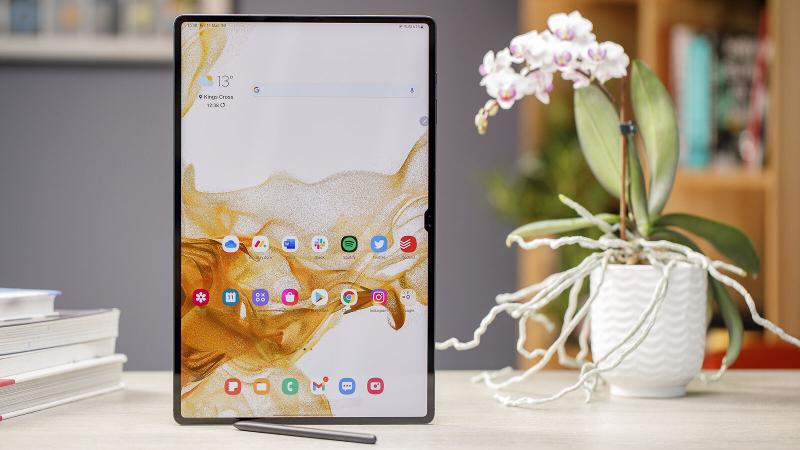
The 14.6in display is not only comfortably larger than the 12.4in screen of the Tab S8+, but is also much bigger than Apple’s closest rival, the 12.9in iPad Pro. It’s an enormous screen, bigger than many laptops, and of course that makes the tablet as a whole pretty big.
To Samsung’s credit, it’s worked hard to keep the S8 Ultra slim despite that. Somehow, almost impossibly, this is just 5.5mm thick – thinner than both those other two tablets. It’s the sort of engineering feat that feels a bit like a magic trick, but a necessary one to manage what’s already a hefty weight: 726g for the Wi-Fi model, and 728g if you add in 5G.
That’s heavy for a tablet, especially one you might want to hold in one hand with a stylus in the other. That means that because of this size, the Ultra is downright awkward to use as a tablet a lot of the time – it’s just too big to comfortably take notes on, use as an e-reader, or even just use to browse the web from your sofa.
Of course, this would be light for a laptop, but Samsung’s official Book Cover Keyboard weighs another 644g in its own right, taking you up to 1.37kg total – which is actually heavier than some equivalent laptops. If you do opt to buy the keyboard – which is an extra $349/£299 by itself – be aware that it’s good, but not great. It’s comfortable enough to type on, and I love the expansive trackpad, but the screen detaches a little too easily from the keyboard, and together with the kickstand its footprint is enormous – this won’t be a friendly option for working from a plane or train.
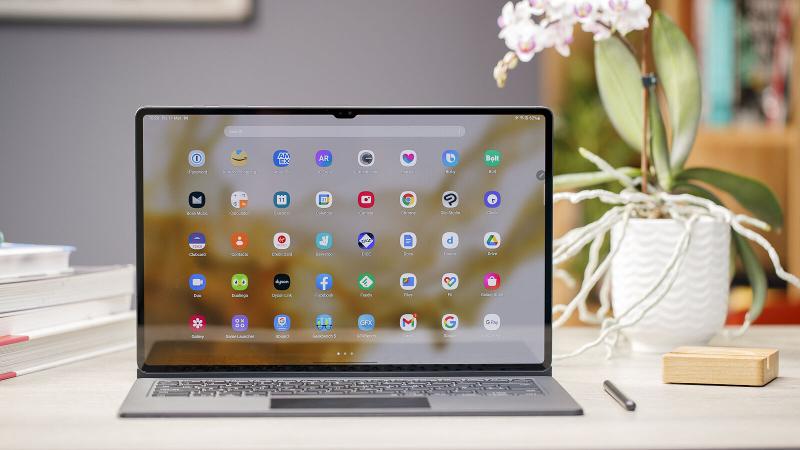
As for how the Ultra looks, Samsung has kept things restrained. While the S8 and S8+ come with some colourful finish options, the Ultra is only on offer in Graphite grey. That dominates the tablet’s aluminium rear, apart from a small Samsung logo, antennae lines, and black strip running along from the two rear cameras – where the S Pen stylus can attach magnetically. If you prefer, you can also attach the S Pen to some (though not all) of the squared sides.
From the front though, there is one standout design element: the notch. While Samsung has moved away from notches on its premium phones – with punch-hole selfie cameras on the S22 series and an under-display camera on the Z Fold 3 – the company has made the unusual choice to put the Tab S8 Ultra’s two front-facing lenses into a notch.
Although the tablet does have enough of a bezel to hold onto, it apparently didn’t allow enough space for these lenses. Fortunately, the slanted notch only drops a little way into the display, so for the most part it won’t get in the way of content. This doesn’t feel like the most elegant way of handling selfie cameras in 2022, but ultimately it doesn’t feel like a major drawback.
In terms of protection, the S8 Ultra’s body is made out of Samsung’s Armour Aluminium, which I can say from experience is at least tough enough to protect an otherwise fragile Z Flip 3 from a nasty drop. The display is coated in Gorilla Glass 5 – though not the latest Victus standard – but there’s no IP rating for dust and water-resistance protection here.
Display and audio
- Enormous 14.6in AMOLED display
- Widescreen 16:10 aspect ratio
- S Pen stylus support
- Quad speakers
The Tab S8 Ultra’s display is of course the main reason it’s so damn big.
At 14.6in, this would be a pretty big screen on a lot of laptops, let along tablets. As I’ve already said, that makes the tablet as a whole bulky, but of course the perk is that there’s a whole lot of screen space, whether you want to use it for streaming Netflix or running multiple work apps side-by-side.
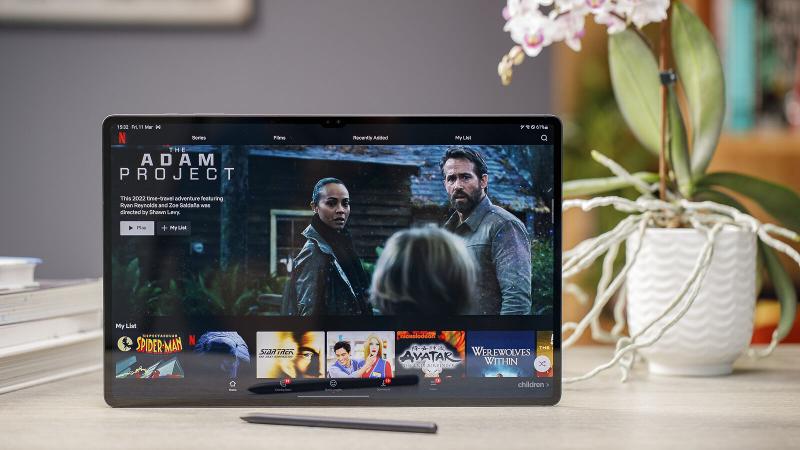
You’d think the latter would be the obvious focus, but I’m not so sure. That’s in part because Samsung has opted for an unusual aspect ratio, with a wide 16:10 display that’s a better match for Netflix originals and movie streaming than it is for productivity, especially at a time when work-focussed laptops are moving in the opposite direction, towards boxier screens that offer extra vertical space.
That’s not to say that you can’t work on a widescreen display like this – and of course Samsung has included plenty of software tools to do just that, which I’ll discuss later – but this feels like a screen best suited to watching on.
And to be fair, screens don’t get much better. This is a 120Hz AMOLED panel, capable of smooth animations and fast frame rates while rendering content in beautiful detail and depth at a crisp 1848 x 2960 resolution. HDR10+ support rounds out the feature set, helping supported content look its best – though there’s no support for the Dolby Vision standard, despite the tablet’s impressive quad speakers supporting Atmos.
Samsung has included an in-display fingerprint sensor too, found along the bottom of the screen (or the right-hand side, when using it landscape). This is as fast and reliable as you’d expect.
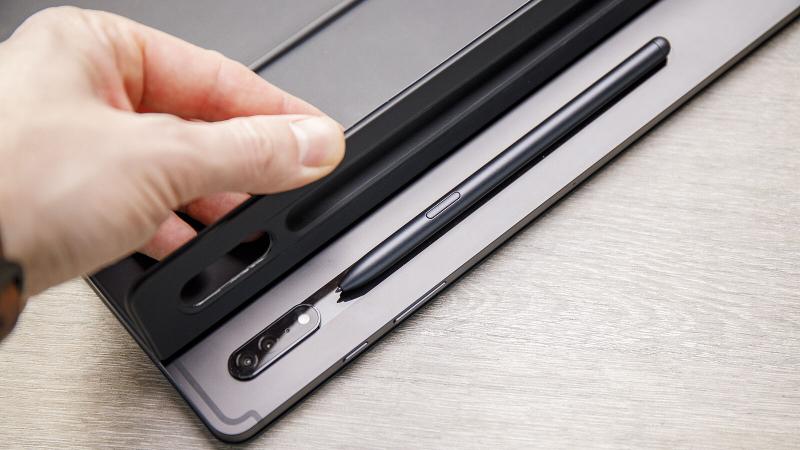
Of course the other key feature is that this display supports input from Samsung’s S Pen stylus, which comes included with the tablet. This latest version has shaved the response rate so much that the stylus essentially feels instantaneous, eliminating the awkwardness from taking notes or drawing doodles.
The S Pen itself boasts only a single button, but Samsung’s ‘air actions’ allow you to combine this with gestures to trigger a range of customisable effects unique to each app, adding an extra level of functionality to the stylus setup.
Specs and connectivity
- Flagship Snapdragon 8 Gen 1 chip
- Up to 512GB storage and 16GB RAM
- Optional 5G networking
You’d be worried if a tablet this expensive didn’t have specs to match, but Samsung hasn’t skimped there.
The Tab S8 Ultra is powered by Qualcomm’s Snapdragon 8 Gen 1 – the company’s most powerful chip yet – and can be specced with up to 16GB of RAM and 512GB of storage (though this will make an already expensive tablet even more so).
If you don’t care about the RAM, bear in mind that the S8 Ultra supports microSD cards up to 1TB, so even the cheapest SKU can easily be expanded to offer a lot more storage.
Performance is inevitably impressive. I’ve actually been testing out the S8 Ultra’s cheapest version, with 128GB storage and 8GB RAM, but I’ve found even this model able to comfortably keep up with anything I’ve thrown at it, including multi-tasking multiple apps in split-screen for a full work day.
In benchmarks this is the most powerful Android tablet we’ve tested yet, though it must be said that it lags far behind Apple’s latest M1-powered iPads. Impressively, it manages to drive relatively high frame rates on GFXBench’s more demanding graphics tests despite the high WQXGA+ resolution. I’d worried that because the build is so slim I’d see overheating problems, but I haven’t noticed any so far.
It’s worth noting that the S8 Ultra is among the products that Samsung has admitted can have performance throttled in certain apps by the company’s Game Optimization Service, especially many games. This will limit performance (in the name of protecting the hardware from overheating and other issues), though Samsung is issuing patches to reduce the throttling behaviour.
The 8 Gen 1 is also capable of providing 5G networking, though you’ll have to pay extra for it – by default the tablet is Wi-Fi-only. At the time of writing no US carrier is offering the 5G model either, so American readers may not get the option at all.
Beyond 5G, you’ll find Wi-Fi 6E supported along with Bluetooth 5.2 There’s no NFC included, but I think that’s fine – I struggle to envision many people breaking a 14.6in tablet out to make a contactless payment with.
Battery and charging
- Average battery life
- Fast charging by tablet standards
- Charger not included
A big display gave Samsung space for a big battery, with a whopping 11200mAh cell here – almost triple the size of a typical smartphone battery, and more than most tablets too.
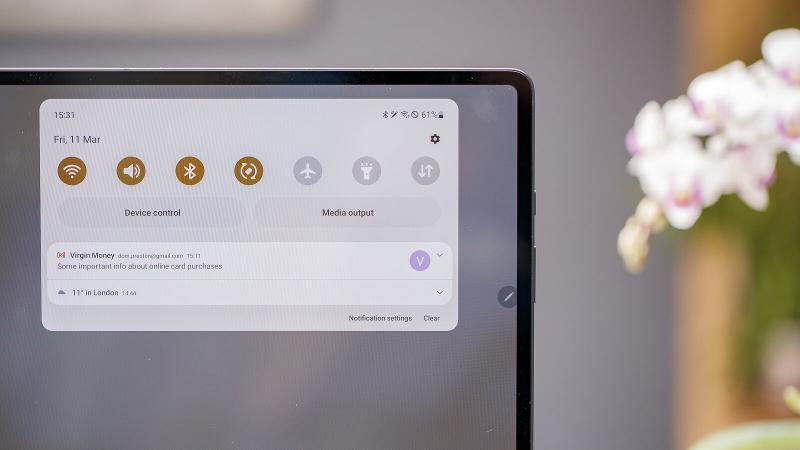
Of course, with that battery needing to power top specs and a big display, it does drain fast. I’ve found it packs enough power to last a work day – which is probably the best bar for success here – but you’ll likely want to charge it afterwards. That means you won’t need to worry too much about bringing a charger out with you if you’re working on the go, but will need to remember to top it up overnight.
If that’s not an option, charging is fast – at least by tablet standards. The S8 Ultra can use up to 45W charging speeds, which Samsung says can return a full charge in 82 minutes. We test smaller time increments, and I found it reach a 14% charge in 15 minutes, and a 29% charge in 30 minutes. That’s slower than Samsung predicts, and on that basis I’d expect a full charge to take more like two hours.
There’s an important caveat there though: I wasn’t testing with an official 45W Samsung charger. That’s because Samsung doesn’t include one in the box. I tested charging with a third-party 65W USB-C PD charger, and you should be able to happily use anything similar – or indeed your phone charger – but bear in mind that you might have to pay extra to buy the official plug to guarantee Samsung’s top speeds.
One other downside is that there’s no wireless charging support here. That’s not too big of a deal for a tablet – the sheer size means this would be awkward to place on the average charging pad anyway – but it does also mean that there’s no reverse wireless charging, so you can’t use this to top up your phone or headphones on the go.
Camera and video
- Dual 12Mp front-facing cameras
- 13Mp and 6Mp rear cameras
- Trumps almost any laptop for video calls
The Tab S8 Ultra has a total of four cameras, which may sound like overkill for a tablet, but there is some method to the madness.
On the back you’ll find a pair of lenses: a 13Mp main camera and a 6Mp ultrawide. I’ll be honest, I’ve had to force myself to use these to test the tablet out, and I can’t imagine many cases in which people would rely on them – this is far too bulky a device to use as a camera in any traditional sense.
Still, no doubt use cases exist, and the cameras here aren’t bad at all, especially in bright light. The ultrawide is limited, with low dynamic range and splotchy details, but the main camera generally gets the job done.
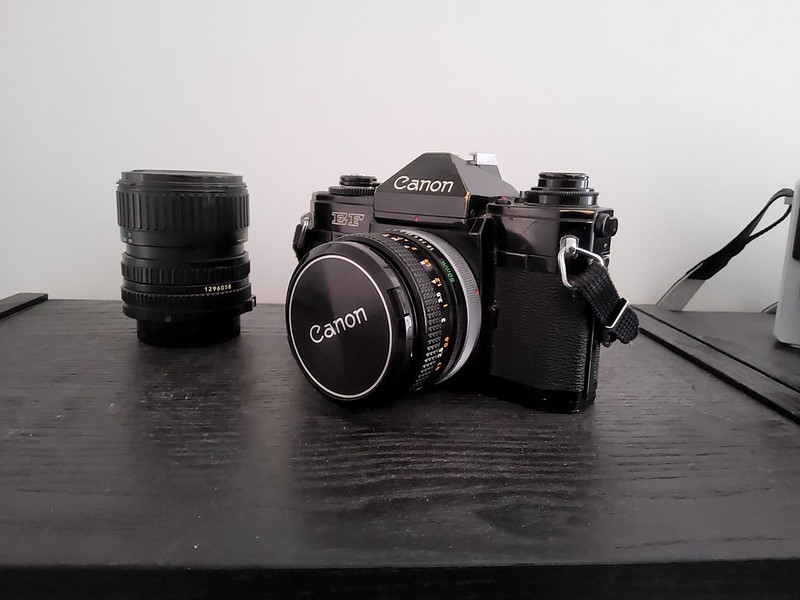
The two front-facing cameras are arguably more important, as they’ll kick in if you want to use the Tab S8 Ultra for video calls – and whether or not you buy into the notch will really hinge on their quality.
Both lenses use 12Mp sensors, though there’s still a slight quality drop as you switch to the ultrawide – though much less so than with the rear cameras.
In stills both cameras take detailed vibrant shots, but the main lens handles dynamic range and challenging lighting better.
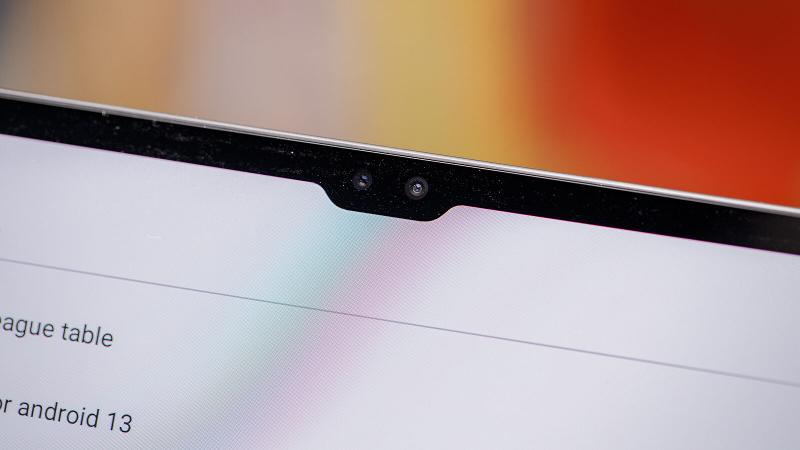
More importantly, they’re both capable when it comes to video, and this is one area where the Tab S8 Ultra can edge almost any laptop on the market – if you want to take a video call on the go the standard for laptop webcams remains embarrassingly low, while both these lenses preserve skin tone and detail and can accommodate varying types of lighting well.
Software and updates
- Ships with Android 12 and OneUI 4.1
- Four years of Android updates promised
- Optional…
